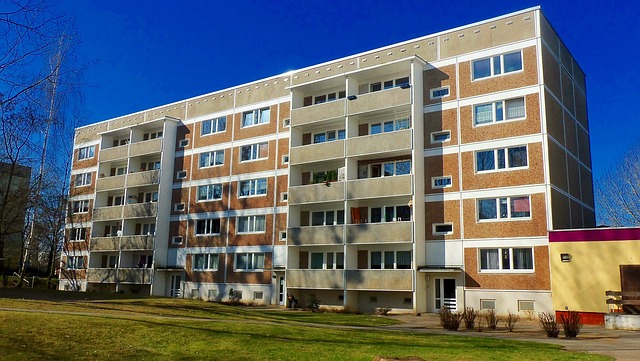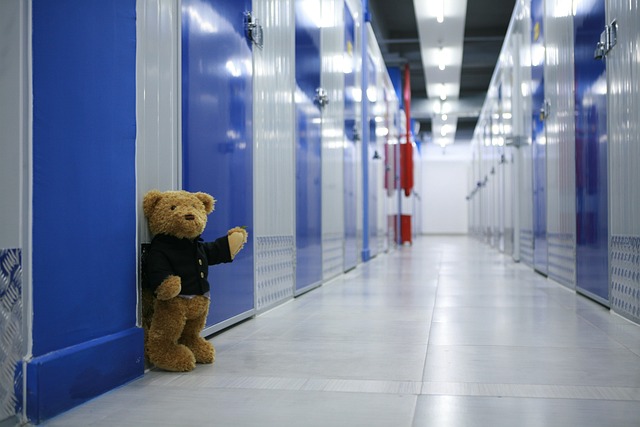Investing in Real Estate Private Equity can be a great solution to quickly invest in all types of commercial real estate from multi-family apartment complexes to medical, office, self-storage and of course, non-commercial single-family houses while letting someone else handle all the details.
This post is a continuation in the series on Investing in Real Estate Private Equity, a guide to Real Estate Partnerships, Real Estate Private Equity Funds, Syndicates & Crowdfunding.
What Types of Real Estate Can You Invest In?
In a previous post, we discussed how investing in private equity funds allows you to add real estate to your portfolio for diversification. But, we have yet to discuss the types of real estate that are available for investment. Along with the reasons why you would choose one over the other. Each real estate category has its own advantages, disadvantages, and nuances, which I will discuss below.
This is one of my favorite reasons why I love investing in private equity funds, the amount of extreme control you have in the types of properties you invest in. Let’s dig into each the various types of real estate you can invest in …
Real estate private equity is probably the easiest way to invest in commercial real estate, since most commercial properties require a large amount of capital (money).
Property Types
There are many types of real estate that are investable, including residential properties (single-family homes, multifamily apartment buildings, condos), commercial properties (office buildings, retail spaces, warehouses), industrial properties (manufacturing plants, distribution centers), hospitality properties (hotels, resorts), and specialized properties (senior living facilities, student housing, healthcare facilities, self storage).
Generally speaking any piece of real estate you see as you are driving down the street is investable. Let’s go through these categories one by one …
Residential Properties

Residential properties are what most people think of when they think of real estate investments. And, they are one of the better real estate types to start with, mostly because they are easier to understand and vet the deals.
Advantages of investing in residential properties include:
- Consistent demand: People will always need a place to live, so there is a steady demand for residential properties.
- Potential for rental income: Residential properties can provide a steady stream of rental income for investors.
- Appreciation: Historically, residential properties have appreciated in value over time, which can lead to long-term capital gains.
- Relatively low entry cost: Compared to commercial properties, the entry cost for residential properties can be lower.
Disadvantages of investing in residential properties include:
- Vacancy risk: If a residential property sits vacant for a long time, it can eat into potential profits.
- High maintenance costs: Residential properties often require more frequent and expensive maintenance than commercial properties.
- Regulatory risks: Residential property investors need to be aware of and comply with various regulations, such as zoning laws, building codes, and fair housing regulations.
- Rent control laws: In some areas, rent control laws can limit the amount of rent a landlord can charge, which can impact potential profits.
Commercial Properties

Commercial properties include office space, retail spaces (strip malls, traditional malls and hybrid complexes) and warehouses.
Advantages:
- Higher income potential: Commercial properties, such as office buildings, retail spaces, and warehouses, tend to generate higher rental income compared to residential properties.
- Longer lease terms: Commercial leases are typically longer than residential leases, providing a more stable and predictable income stream for investors.
- Lower tenant turnover: Commercial tenants tend to stay longer in their rented spaces, reducing vacancy rates and associated costs.
- Professional tenants: Commercial tenants are usually businesses, which means they are more likely to treat the property with respect and care.
- NNN leases: Some commercial leases are “triple net” (NNN) leases, which means the tenant pays for operating expenses such as taxes, insurance, and maintenance, reducing the landlord’s expenses.
Disadvantages:
- Higher initial costs: Commercial properties typically require higher upfront investment and ongoing maintenance costs than residential properties.
- Longer vacancy periods: Commercial properties may take longer to find tenants compared to residential properties, resulting in longer vacancy periods.
- Tenant risk: Businesses can fail, leading to tenant turnover and associated costs for finding new tenants.
- Economic sensitivity: Commercial properties are sensitive to economic conditions, and a downturn can result in higher vacancy rates and lower rental income.
- More complex transactions: Commercial real estate transactions can be more complex than residential transactions, requiring specialized knowledge and expertise.
Industrial Properties

Industrial Properties are very similar to Commercial Properties in their qualities.
Advantages of investing in industrial properties:
- Long-term leases: Industrial properties typically have longer lease terms compared to other types of properties, providing stability and consistent income for investors.
- High tenant retention: Industrial properties usually have a low turnover rate, with tenants staying for longer periods of time, which can help reduce the costs associated with finding and securing new tenants.
- Lower maintenance costs: Industrial properties generally have lower maintenance costs compared to other types of properties as the tenants are responsible for the upkeep of their own space.
- Potential for higher yields: Industrial properties can offer higher yields than other types of properties due to their longer lease terms and lower maintenance costs.
Disadvantages of investing in industrial properties:
- Limited tenant pool: The tenant pool for industrial properties is often limited to businesses that require specific types of spaces, such as warehouses or manufacturing facilities, which can make it more difficult to find new tenants if the property becomes vacant.
- Location limitations: Industrial properties often require specific locations to be viable, such as close proximity to highways, rail lines, or ports, which can limit the number of potential properties available for investment.
- Higher upfront costs: Industrial properties can be expensive to acquire and require more significant upfront investment due to their size and specialized nature.
- Economic volatility: Industrial properties are more susceptible to economic volatility than other types of properties, as businesses that occupy these spaces may be more affected by changes in the economy and demand for their products or services.
Hospitality

Hospitality includes Hotels, Motels and vacation resorts. You can also include AirBnB and VRBO to this category and I tend to group single-family or condo investments in a tourist location like a ski town here as well since they are affected by seasonality and tourism like a hotel would.
Advantages of investing in hospitality properties:
- Potential for high returns during peak seasons
- Demand can be more stable than other real estate sectors in popular tourist destinations
- Opportunities for value-add investments, such as rebranding or renovations
Disadvantages of investing in hospitality properties:
- Highly dependent on tourism and travel industry, making it vulnerable to economic downturns or pandemics
- Requires specialized management and operational expertise
- Seasonality can lead to fluctuations in revenue and cash flow
Specialized Properties

The “everything else” category includes a whole bouillabaisse of property types. And, really, it is probably wrong to group them all together since they each have their own nuances. These specialized properties include medical buildings, self-storage facilities, data centers, student housing, retirement and senior living facilities. Each has its own unique advantages and disadvantages:
Advantages:
- Less competition: Specialized properties may have less competition compared to traditional residential or commercial real estate.
- Higher rental rates: Due to their unique features and target audience, specialized properties may be able to command higher rental rates.
- Long-term leases: Certain specialized properties may have longer lease terms, providing more stable and predictable cash flows.
- Niche demand: Specialized properties can cater to a specific niche demand, potentially leading to less volatility in rental income during market downturns.
Disadvantages:
- Limited market: Specialized properties may have a limited market, making them less liquid and harder to sell.
- Higher risk: Specialized properties may be riskier due to factors such as a niche market or reliance on a specific tenant or industry.
- Unique challenges: Different specialized properties come with their unique challenges, such as strict regulations for medical buildings or a need for climate control in self-storage facilities.
- Expertise: Specialized properties often require specialized knowledge and expertise, making them less accessible to novice investors.
With all the types of real estate you can invest in, you can see from the above that there is A LOT of room for diversification when investing in Commercial Real Estate. This allows you to either focus on a particular sector that you feel most strong about OR to lower your investment risk by investing in different real estate categories.
Can adding Real Estate make your Investment Portfolio safer?
Reduce Taxes, Less Volatility?
For your FREE Personalized Assessment
How Many Are Out There?
The following is a breakdown of typical proportions of real estate investment types that you can invest in:
- Office Buildings: This type of property usually accounts for around 30% of all commercial real estate investments.
- Retail Buildings: Retail properties can make up around 20-25% of commercial real estate investments.
- Industrial Properties: These include warehouses, distribution centers, and manufacturing facilities, and they typically account for around 15-20% of commercial real estate investments.
- Multifamily Properties: These are residential buildings that have multiple units, such as apartment complexes, and they usually make up around 15-20% of commercial real estate investments.
- Hospitality Properties: This category includes hotels and other properties used for lodging, and they typically account for around 5-10% of commercial real estate investments.
- Other Properties: This includes various other types of commercial real estate, such as healthcare facilities, data centers, and self-storage facilities, and they may account for the remaining 5-10% of investments.
In our next few posts, we will look into further ways to diversify with real estate, by delving into asset classes, economic cycles and eventually looking into development stages and location.
What is your Favorite Category of Real Estate? There is no wrong answer.
Keep reading to learn more about: Investing in Real Estate Private Equity
- Why You Need Real Estate Private Equity, The Ultimate Guide
- What is Real Estate Crowdfunding? Everything You Need to Know.
- What Types of Real Estate Can You Invest In? How to Lower Risk with Real Estate
- Real Estate Asset Classes: Everything You Need To Know To Reduce Risk In Your Portfolio
- Real Estate Economic Cycles: Know When To Invest
- How to Diversify Your Real Estate Investments
- Real Estate Development Stages: You Need To Know This
- Real Estate Equity vs Debt: You Need to Know The Difference
- Real Estate Private Equity Advantages: A Need To Know Guide
- Real Estate Private Equity Disadvantages: Everything You Need To Know
- Real Estate Syndication vs REIT: How to Passively Invest in Real Estate
- Unlocking the Mystery: Pari Passu in Real Estate Investments
